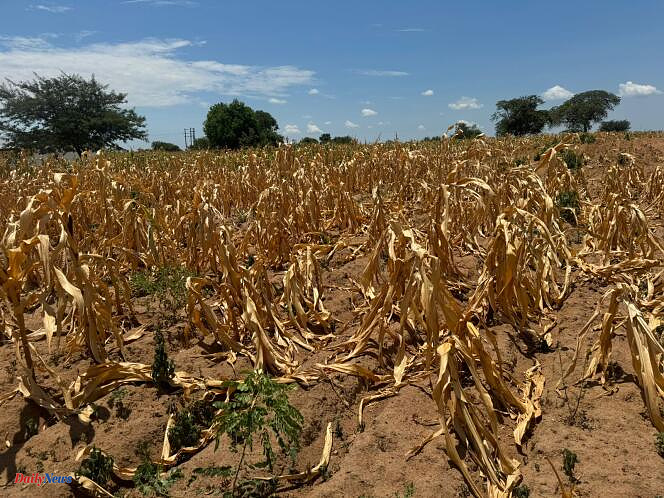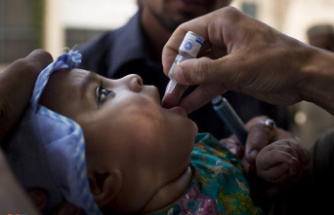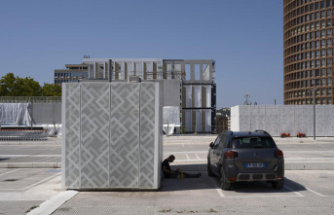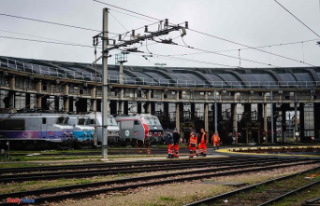Electricity rationing has started in Zambia. To deal with the consequences of the drought on the country's main dams, the national company Zesco has been carrying out load shedding for eight hours per day since Monday March 11. She made no secret that this would have a “significant impact on supplies”.
In this landlocked country of 20 million inhabitants, one and a half times the size of France, access to energy depends almost entirely on hydroelectric power stations built on the Zambezi River and its tributaries. The artificial Lake Kariba, which supplies the largest of them, has barely reached 15% of its filling capacity while the rainy season ends in a few weeks. “We cannot rule out going down to one of the lowest levels ever recorded,” warned the Zambezi River Authority, which manages the distribution of this water resource shared with neighboring Zimbabwe. The rains normally last from November to April but this year, the month of February was completely dry.
This rainfall deficit also has severe repercussions on agricultural production. At the end of February, in a speech to the nation, President Hakainde Hichilema declared the country in a "national emergency and disaster" situation, blaming the joint responsibility for climate change and El Nino, this natural phenomenon which, periodically, causes a rise in temperatures and a reduction in rainfall in this part of southern Africa. Half of the corn harvest, the cereal that is the basis of the local diet, is considered lost.
A call for international assistance has been launched. The UN hopes to be able to mobilize funds to provide direct monetary assistance to 500,000 people. More drought-resistant seeds must also be distributed to farmers to try to take advantage of the few rains still expected and prevent migration to the cities. By the end of 2023, some 2 million people were already experiencing acute food insecurity. The populations of the south and west are the most affected by the crisis.
Copper production under threat
“Zambia is facing two crises at the same time. A cholera epidemic since October 2023, being brought under control; and today, this drought which is raging in several regions. Declaring itself in a disaster situation will allow the government to reallocate part of its budget to relief. This also triggers the possibility for foreign partners to activate their own emergency mechanisms and funds,” explains Béatrice Mutali, the UN resident coordinator in Lusaka. The country has only used this system twice in the past, in 2002 and 2008, following a drought and a flood.
This time, this new climatic hazard occurs while the State is bankrupt and has been trying for three years to renegotiate its external debt with its public and private creditors. In November 2020, in the midst of the Covid-19 crisis, Zambia was the first country to declare default and turn to the “common debt treatment framework” put in place by the G20 for low-income countries faced with repaying their installments and without financial room for maneuver to respond to the pandemic. Debt service then absorbed more funds than the health, social protection and agriculture budgets combined.
The government reached an agreement with bilateral donors in the fall of 2023, but discussions are continuing with private operators in order to obtain comparable treatment, a condition for a final compromise. “It’s an extremely complex process. Concessions must be obtained from creditors which will enable the country to avoid falling back into over-indebtedness and give it the means to develop and cope with possible economic shocks. To do this, we work from scenarios by integrating several risks. But the climate is not one of them,” admits a banker involved in the matter.
“Yet in the case of Zambia, drought constitutes one of the main factors of macroeconomic instability,” he continues. It endangers agricultural exports or those of copper, whose production is threatened by electricity shortages, with negative repercussions on the local currency and the increase in the cost of all transactions denominated in dollars, including debt. » The country is the second largest producer of copper in Africa.
“The agricultural season is over.”
While Zambia has in no way contributed to climate change, extreme events now recur almost without respite. Since 2012, only one year has not been marked by more or less intense or prolonged episodes of drought. The scale of flooding has also worsened, with 2023 set to be a year of unprecedented flooding in fifty years, with more than 150,000 people affected.
“Disaster after disaster, families have less and less means to bounce back. Without outside help, the situation can only get worse. This year, the agricultural season is ruined and the vast majority of farmers who depend on the rains have lost all hope of sowing,” underlines Chris Mzembe, deputy director of the NGO Care in Zambia.
The increase in temperatures in this part of the continent has been twice as fast as the global average over the past five decades. In its special report on the global consequences of 1.5°C warming (2018), the Intergovernmental Panel on Climate Change (IPCC) identifies southern Africa as one of the areas likely to be most prone to , in the future, to extreme temperatures and droughts.
The Zambian Minister of the Environment, Collins Nzovu, demanded that his country have rapid access to the Loss and Damage Fund to finance its adaptation to climate change, as evidenced by this new crisis. The creation of this tool, long requested by African countries, was recorded during the world climate conference (COP28) in Dubai at the end of 2023. Intended to compensate for the damage from disasters or irreversible losses linked to global warming in countries. the most vulnerable, it is however far from having been capitalized to meet their needs.












